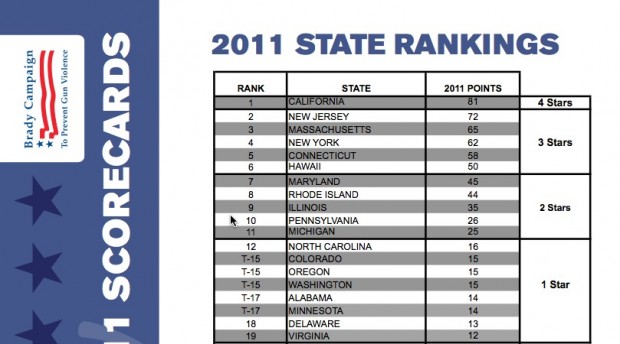
The Firearms Statistics That Gun Control Advocates Donít Want to See
The Blaze

To accompany TheBlaze’s coverage of the National Rifle Association’s annual meeting in Houston, we figured it could be helpful to share some gun statistics pointed out to us by some of the NRA Convention attendees. Forget the talking points used by both sides in the gun control debate; we’re going to be talking about verified statistics.
Gun control advocates be advised, these are not the statistics you are looking for.
According to data from the FBI’s uniform crime reports, California had the highest number of gun murders in 2011 with 1,220 — which makes up 68 percent of all murders in the state that year and equates to 3.25 murders per 100,000 people.
The irony of such a grisly distinction is evident when you look at which state was named the state with the strongest gun control laws in 2011 by the Brady Campaign to Prevent Gun Violence. You guessed it — it was California.
“What is very unusual is that California also has a program by which we can remove guns, recover guns from people who have a gun and then subsequently become prohibited or dangerous,” Brady Campaign spokeswoman Amanda Wilcox said at the time.
It should be noted, though, that California is also one of the biggest states in the country, with a population of about about 37 million. Therefore, it might make sense that it would have a high number of murders but its murder rate is still high as gun control has had a seemingly inconsequential impact. In comparison, Texas has a population of about 25.6 million and saw 699 total gun murders in 2011 — nearly half that of California — and a firearms murder rate of 2.91 per 100,000.
In 2011, Utah, the state that the Brady Campaign determined had the least gun control, experienced just 26 gun murders and a firearms murder rate of 0.97. Utah has a population 2.8 million.
But if you look at the data another way — murders per 100,000 people — another gun control haven tops the list.
The FBI data also notes that Washington, D.C. had the highest murder rate per 100,000 people. The nation’s capital saw 12 gun murders per 100,000 in 2011. DC also finished first in gun-related robberies per 100,000 people – with 242.56.
In 1976, the District of Columbia required all guns be registered, banned new handguns and required guns at home to be stored and dissembled or locked up. Unfortunately, the draconian measures — which lasted more than three decades — didn’t had the desired effect.
Journalist and attorney Jeffrey Scott Shapiro explains the not-so-surprising result in an op-ed published in the Wall Street Journal on Jan. 15, 2013:
The gun ban had an unintended effect: It emboldened criminals because they knew that law-abiding District residents were unarmed and powerless to defend themselves. Violent crime increased after the law was enacted, with homicides rising to 369 in 1988, from 188 in 1976 when the ban started. By 1993, annual homicides had reached 454.
[...]
Since the gun ban was struck down, murders in the District have steadily gone down, from 186 in 2008 to 88 in 2012, the lowest number since the law was enacted in 1976.
Though it should be noted that the gun murders started decreasing in 1994.
Today, Washington, D.C. still has some of the strictest gun laws in the nation. And yet again, the gun murder rate remains dramatically high, the highest in the United States in fact.
So, do the numbers indicate that gun control is the answer to gun violence? You decide.

